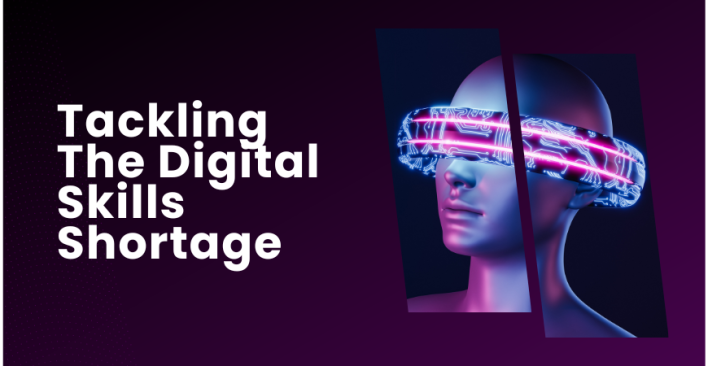Talent on Demand is an Australian Winner

Victor Hugo said there was one thing stronger than all the armies in the world: an idea whose time had come. Right now, a flexible, dynamic, on-demand workforce is such an idea.
Overseas punters are critical of most aspects of our innovation ecosystem including risk tolerance, tall-poppy syndrome and venture capital flows. But there is one segment in which Australia is bagging some wins and that is in the Talent-as-a-Service space.
TaaS is cloud-based technology enabling businesses to connect with talent on demand, when and where they need it. We’re talking about freelancers and contractors through to professional service firms and agencies.
The result, when done properly, is greater efficiency, scalability and productivity for individuals, companies and economies across the world. With talent being the largest cost base for most businesses, the variabilisation of talent-related costs from traditionally rigid models is perhaps the highest impact “as-a-service” yet.
What is our advantage?
 First, we are a highly connected bunch. With 77 per cent of the Australian population in possession of a smartphone, device ownership is second only to South Korea (88 per cent). High rates of smartphone penetration have helped drive rapid adoption of the “gig economy” for suppliers and buyers. Deloitte estimates that 45,000 people earned income from the connected, collaborative economy last year in NSW. Our connectivity is making it easier to source and manage multiple income streams as well as tap into on-demand services and/or on-demand labour.
First, we are a highly connected bunch. With 77 per cent of the Australian population in possession of a smartphone, device ownership is second only to South Korea (88 per cent). High rates of smartphone penetration have helped drive rapid adoption of the “gig economy” for suppliers and buyers. Deloitte estimates that 45,000 people earned income from the connected, collaborative economy last year in NSW. Our connectivity is making it easier to source and manage multiple income streams as well as tap into on-demand services and/or on-demand labour.Now, pair this connectivity with that enviable Aussie work-life balance. Getting to the office is just as important as getting to the beach afterwards. It’s little wonder Australian workers and service providers are flocking to TaaS platforms (and the beach).
Australians are fans of meritocracy, casual workplaces with flat structures.
If you’re familiar with Hofstede’s index, Australia scores very low on the powerindex dimension (36/100). This means that within Australian organisations, hierarchy is primarily established for convenience, superiors are accessible and they rely on individuals and teams for their expertise. Managers and employees expect to be consulted and information is shared frequently.
[bctt tweet=”Talent on demand is an Australian winner says @BridgyL” username=”ATCevent”]
At the same time, communication is informal, direct and participative.
Conversely, if we look at Hofstede’s individualism dimension — that is, the degree of interdependence a society maintains among its members, (whether one’s self-image is defined in terms of “I” or “we”) — Australia scores a whopping 90. This translates into a loosely knit society in which the expectation is that people look after themselves and their immediate families. Belonging to a company, a collective, a group, to which you are highly loyal is far less important to Aussies than having a strong sense of self, which probably facilitates greater adoption of independent working.
New models
TaaS marketplaces tend to be winner-take-all or winner-take-most businesses with a medium-to-long-term investment horizon. The prize is large but marketplaces need a lot of capital with a lower liquidity, or access to large distribution platforms, to sustain their road to success and scale.
Another risk is that leaders at Australian arms of global companies do not have the autonomy to make decisions for the Australian market with respect to adopting and implementing TaaS within their businesses. Australian leaders need to champion innovation domestically and globally.
We have it good. Why change? During the past 10 years, Australia has fallen behind on key innovation and efficiency metrics, with value chains at all-time inefficient levels. High prices, high salaries and low competition equals low impetus for change.
Before sophisticated technology platforms, flexibility was a bothersome term in the corporate arena, conjuring thoughts of compulsory quarterly HR meetings filled with quotas, agendas and the like. Pre-tech, it was difficult for companies to unleash the business value in the ability to systematically bring talent and expertise in and out of their organisation. It was just very tough and costly. That has changed.
TaaS has proven that businesses, consumers and the talent they seek can thrive and succeed together while achieving common goals.
[bctt tweet=”TaaS has proven that businesses, consumers and the talent they seek can thrive and succeed together.” username=”ATCevent”]
Technology giant Cisco, for example, estimates it saves $US277 million each year in productivity gains by encouraging telecommuting and flexible working hours.
The challenge will be for Australia to continue leading the TaaS revolution by allowing the world’s biggest organisations to join the “on-demand” future.
Let’s not waste our advantage.
This article first appeared on: The Australian August 23, 2016
Join Bridget along with other leading experts including Alan Wilkerson, Matthew Dickason and Antonia Mochan to find out more at the Contingent Workforce Conference 2016. Limited tickets left. See full agenda and purchase tickets here.
Images: Shutterstock

Related articles
Leave a Reply
Sign up to our newsletter
Get a weekly digest on the latest in Talent Acquisition.
Deliver this goodness to my inbox!


